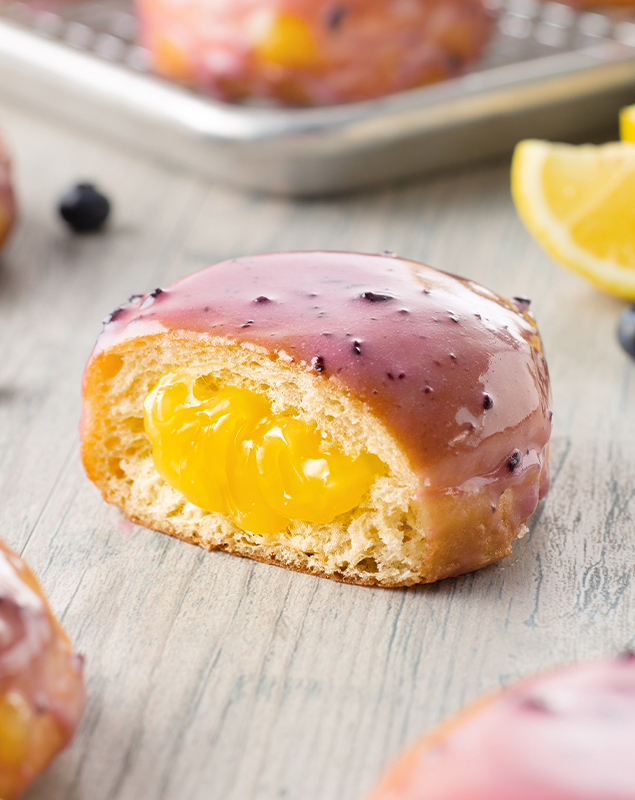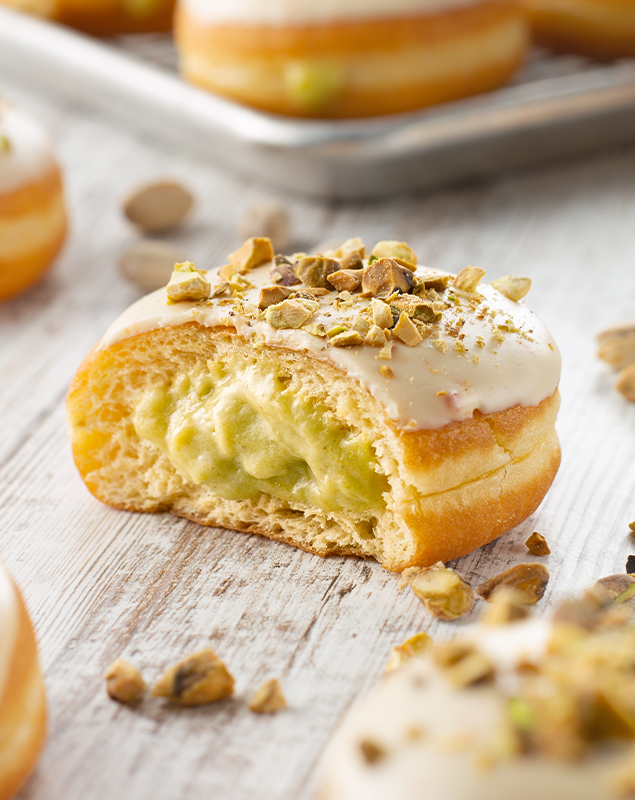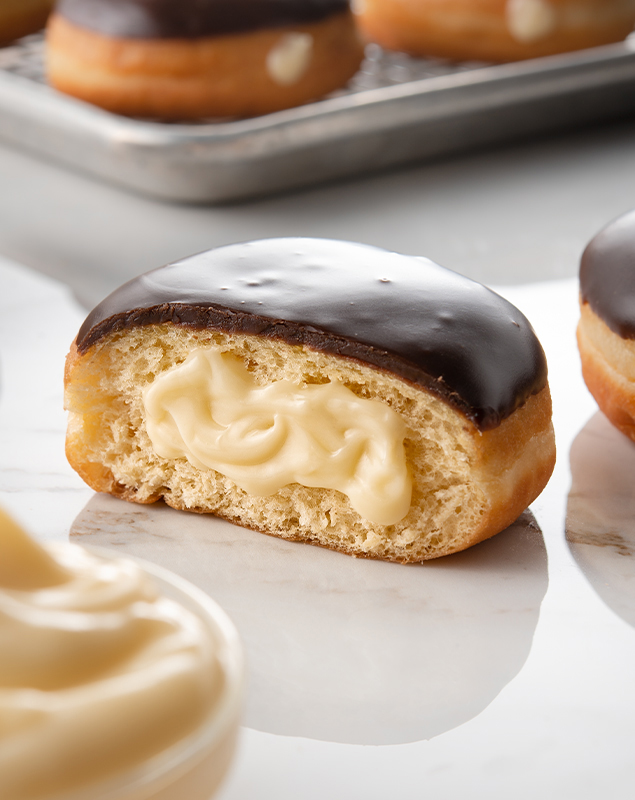Today, a number of consumers are looking for more than just traditional baked goods.
Bakeries face an ongoing demand for new, “Instagram-worthy” items, according to Phil DeWester, senior director of category marketing at Dawn Foods. Unique flavor combinations combined with an alluring presentation may allow bakeries the option to sell items at a premium.
“There’s been an increased appetite for more versatility,” DeWester says. “People want something that’s going to be an experience they can share with a friend or post on Facebook. It helps differentiate bakeries; they can have something customers can only get at their location.”

For bakeries and donut shops, in particular, generating a steady stream of new items across a wide array of options can be an involved endeavor. To keep the production process manageable, numerous bakers are utilizing yeast-raised donut mixes, which require only adding oil or water, instead of a long list of ingredients.
Dawn’s Raised A mix, for instance, is a popular choice, DeWester says, because it can be used to make assorted types of donuts—from basic ring shapes, which can be formed when the dough is first rolled out, to fritters that can be crafted as the dough is re-rolled and gets stiffer.
“You can use all the dough, so it reduces waste; but you can fill an entire donut case with just that one mix,” he says. “It gives our customers the ability to bring new seasonal or limited-time-only items to their bakeries so there’s always something new [and it] gives their customers a reason to go back to the shop because they’re doing something exciting.”
The Efficiency Effect

By streamlining steps, a mix like Raised A can help speed up donut production, reduce errors and potentially result in a better end product.
Not only do baking mixes eliminate much of the risk of over- or undermeasuring individual ingredients, it can also help safeguard portions of the baking process. The Raised A mix has been formulated to be extremely tolerant despite weather or other varying conditions, helping protect the proofing stage that raised donuts require.
“There is specific timing and steps that have to be followed to get a good raised donut,” DeWester says. “[Maybe] the donuts are supposed to be in a proof box for 30 minutes, you get a phone call and have to deal with a customer, come back and they’ve been sitting there for 45 minutes or an hour. They’ll still come out perfect every time with Raised A.”
A mix like Raised A can also come in handy when bakeries need to ramp up production for special events like Paczki Day, a celebration just before Lent to commemorate the Polish tradition of making round, jelly-filled paczki donuts to use up the fats and sugars people planned to abstain from until Easter, according to Dana Sosnowski, Dawn Foods trade marketing manager.
Paczki Day can be a huge sales opportunity for bakeries in the Rust Belt Region, Sosnowski says, where a large number of Polish community members settled after coming to the U.S., as well as other cities where the pastry’s appeal has grown.

“While it’s still very Midwest-focused, it’s disseminated out in the population to people of other ethnic backgrounds; you don't have to be Polish American to appreciate it,” she says. “The mix allows time-saving opportunities. It’s much quicker and you can produce more; that's why so many customers rely on a mix to create paczkis—because demand is so high for that day. Making it from scratch just isn’t the [most] economical way and certainly not the fastest.”
Making Donuts Distinct
In addition to a baking mix, bakers sometimes use pre-made fillings to expedite production for Paczki Day, preventing the need to source, prepare and mix all individual cream- or fruit-based filling ingredients by hand, Sosnowski says.
Prepared fillings can also help bakers efficiently produce a diverse variety of donuts from the same baking mix, especially when combined with toppings that integrate different tastes and textures, like sugar-dusted lemon ricotta donut holes, cinnamon cereal squares on top of a donut with raspberry-flavored icing, classic donuts with crushed cookies or a simple glaze as sweet toppers.
The vast majority of filling flavors Dawn Foods offers, which include options like Bavarian cream, rhubarb, pumpkin and mango, can be used in donuts, according to Elena Taylor, senior marketing director, wet foods; and the fillings have been formulated to remain stable when a product containing them is frozen or unfrozen.

“From a flavor standpoint, the options are limitless,” Taylor says. “Our bakers can take products through the freeze-thaw process and the filling will still function as expected in freshness, taste and texture.”
Being able to simplify production and take advantage of the product reliability that baking mixes and fillings provide is important, says Anne Marie Halfmann, Dawn Foods category marketing senior manager, because it can free bakers up to work on other important tasks—such as focusing on the flavor innovation that will keep customers coming back to their bakery or donut shop.
“That mix is going to deliver for you every time; regardless of baking conditions, you’re going to get a great tasting donut,” Halfmann says. “Customers are always looking for ways to keep their portfolio of donuts relevant. When you’re not spending as much time on dough preparation, that’s more time you have to create really fun donut creations with fillings, toppings, different cuts of donuts—you can spend more time differentiating the donuts from a presentation standpoint.”




